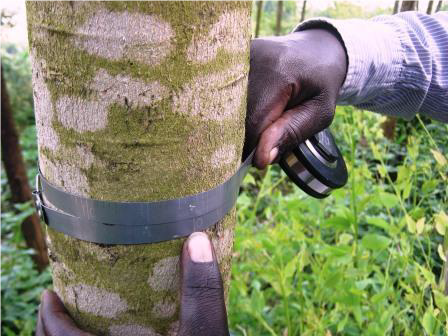The Study and Expertise Fund finances the Rwanda National Forest Inventory
In 2015 the Rwanda Natural Resource Authorities conducted a National Forest Inventory (NFI), based on a large random sampling - 2678 sample units - covering all non-protected forests, shrub-lands and tree resources in ago-forestry areas of the country.
Finding shows that more than 10% of sample units are not any longer forests in 2015. They have evolved to other land uses. For shrub-lands and savanna, more than 25% have been converted to other land uses. This trend led to a decrease of 11,4% of total national forest cover since 2009.
The situation of both public and private production forests in Rwanda is problematic, with an average stock of only 50 m3/ha, while it should be largely superior to 100. The situation of the wood stock is particularly dramatic in small individual private forests - 68% of the non-protected forests - where the average volume reaches only 17 m3/ha.
Optimal Management of Tree resources is a necessity
In total, the current forest resources are producing around 2.3 Million oven dry tons per year (Modt/y). But the woody biomass demand is so high - 5.9 Modt/y in 2015 - that it leads to over-exploitation & forest degradation. Moreover, it constantly reduces the supply capacity for the coming years. With the population growth, demand will increase to 6.8 Modt/y by 2020. Drastic measures must be taken to reduce the demand to a sustainable level.
Small forests are over-exploited
More than 50% of small forests have been cut in the last 2 years and they are very old which makes them unproductive. Small private forests should be the focus of the government efforts in order to reverse forest degradation.
State forests constitute the last stocks for the industry
State forests representing 28% of non-protected forests are better maintained with an average volume of around 127 m3/ha. They are essentially distributed in Southern and Western Provinces, and constitute the last wood stocks able to sustain the development of the wood industry. But they are becoming old, less productive and encroached by high pressure on forest resources. The priority focus should be to ensure their long term concession to private operators, based on well-established management plans. The concession approach could be the foundation for building a professional forest industry sector in Rwanda.
Shrub-lands are under threat
Shrub-lands and savanna areas represent 35% of the production areas, but count only for 6% of the remaining wood stock and 3 % of the annual sustainable supply of wood. They are already too degraded and are the most threatened by conversion into other land. Urgent measures in terms of protection and conversion into well managed production forests should be taken, starting with updating the map of cadaster and ownership.
Agroforestry could be boosted
Tree resources in agroforestry areas count for 39% of the current national woody stock, and for 27% of the annual sustainable supply of woody biomass. By supporting dissemination of agroforestry technics in collaboration with the Rwanda Agriculture Board, tree resources could be doubled in crop areas. They could contribute for more than 40% of the yearly sustainable supply of woody biomass.
Latest news from this project
No news

